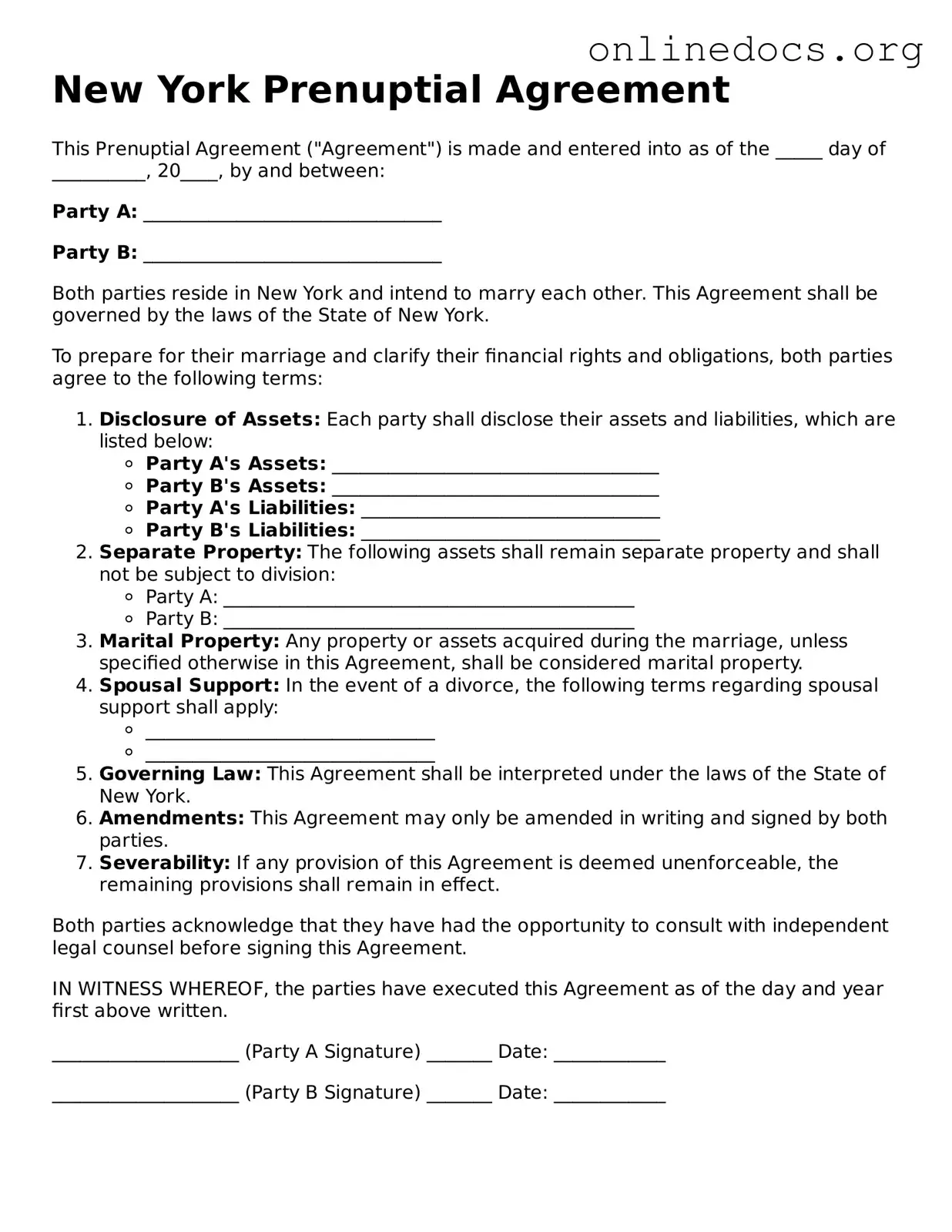Filling out a prenuptial agreement in New York can be a daunting task. Many couples overlook important details that can lead to complications down the road. One common mistake is not fully disclosing all assets and liabilities. Transparency is crucial. If one partner hides significant assets, it could invalidate the agreement later.
Another frequent error involves using vague language. Clear and specific terms are essential to avoid misunderstandings. Ambiguities can lead to disputes, which defeats the purpose of having a prenuptial agreement in the first place.
Many individuals also fail to consider the future. A prenuptial agreement should account for potential changes in circumstances, such as career advancements or the birth of children. Not addressing these scenarios can render the agreement less effective.
Some couples neglect to seek legal advice. It is wise for both parties to consult with their own attorneys. This ensures that each person understands their rights and obligations under the agreement. Without proper legal guidance, one partner may feel pressured into accepting unfavorable terms.
Another mistake is not updating the agreement after significant life events. If a couple experiences a major change, such as a significant increase in wealth or the birth of children, the agreement should be revisited. Failing to do so may leave important matters unaddressed.
People often underestimate the importance of timing. Prenuptial agreements should be completed well in advance of the wedding. Last-minute discussions can create tension and may lead to hasty decisions that neither party is comfortable with.
Some individuals mistakenly believe that a prenuptial agreement is only for wealthy couples. In reality, anyone can benefit from having clear terms regarding property and financial matters. It provides peace of mind for both parties, regardless of their financial status.
Additionally, couples sometimes forget to include provisions for debt. Just as assets need to be disclosed, liabilities should also be addressed. Clarifying how debts will be handled can prevent future conflicts.
People may also fail to consider the enforceability of the agreement. Certain requirements must be met for a prenuptial agreement to be valid in New York. Not adhering to these legal standards can result in the agreement being deemed unenforceable.
Lastly, a common mistake is neglecting to sign and date the document properly. All parties must sign the agreement in the presence of a notary. This step is crucial for the document's legitimacy and can prevent potential challenges in the future.
